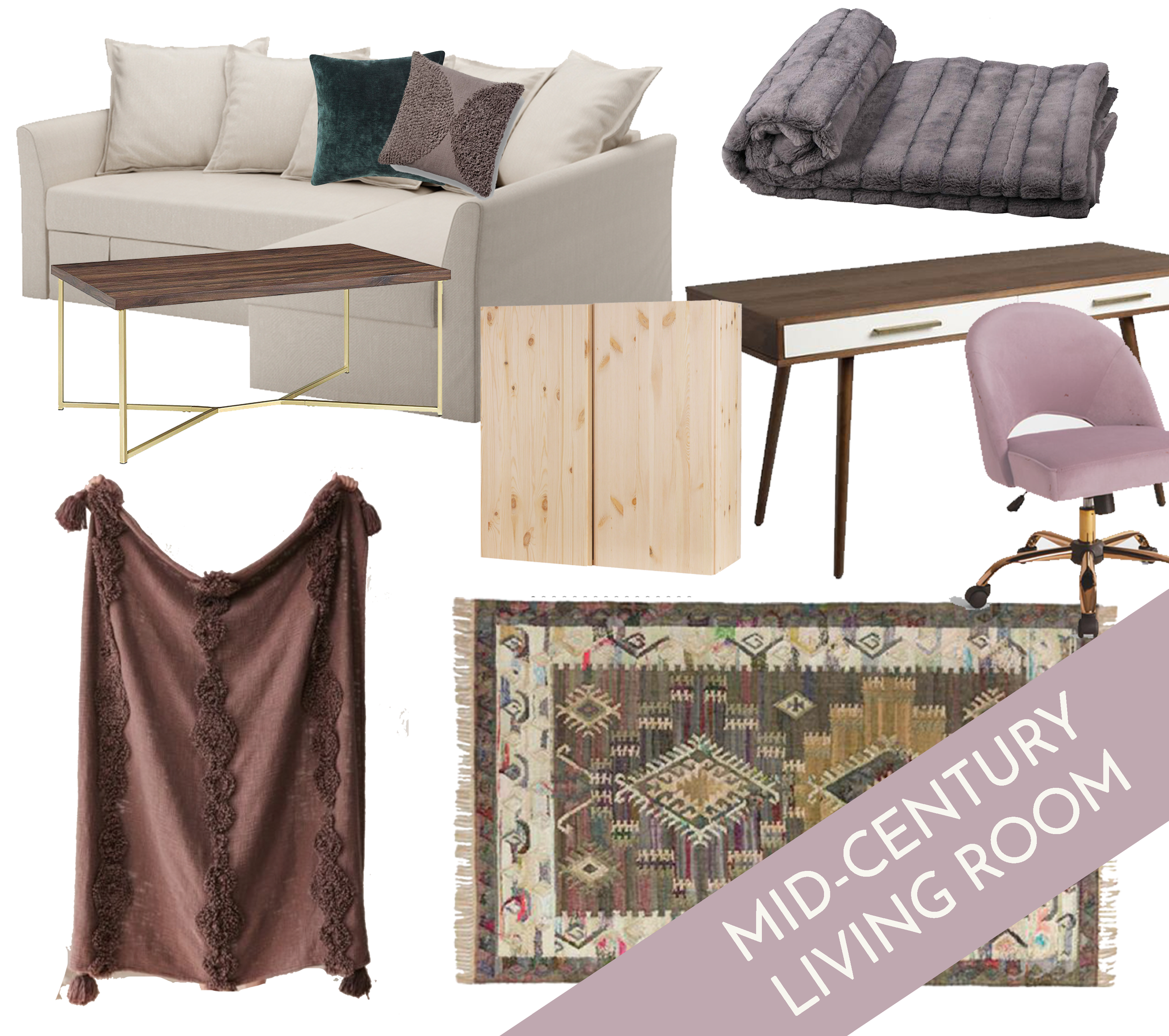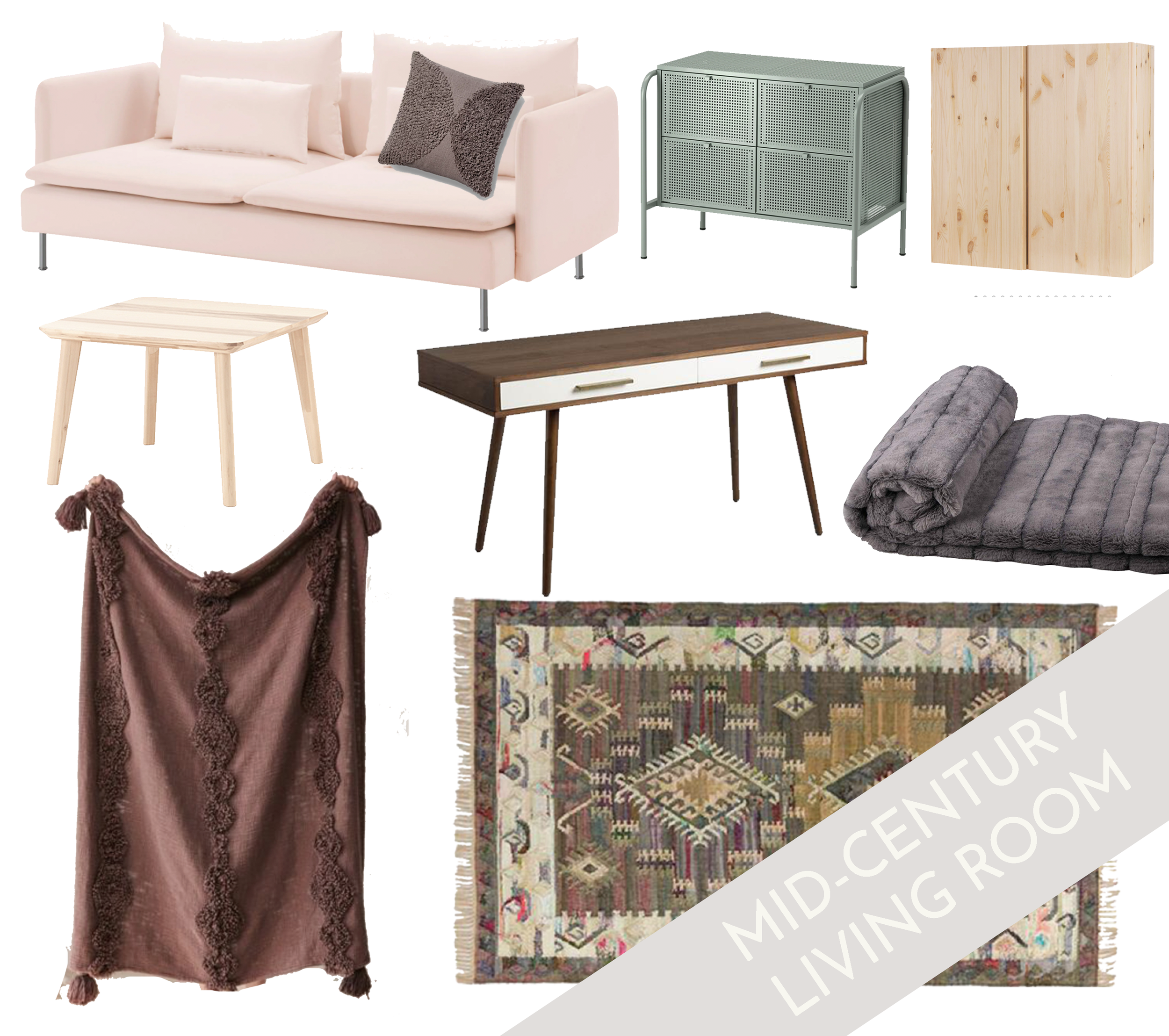How to Visualize Furniture in Your Home | Creating a Vision Board
Today I’m sharing our creatively-meticulous-step-by-step process to confidently purchasing a whole apartment's worth of furniture that aesthetically fits together. Furniture is a big investment and “hoping” it all fits together isn’t as assuring as knowing it all fits together. Creating a visual design process before ever purchasing furniture has helped me SO much in my own journey (we just moved to NYC with a minimal amount of furniture), I hope this process is just as helpful to you!
Step One: Brainstorm and Narrow Down Looks you LOVE
Chances are, you already have a trusty Pinterest Board for your dream home. I had a gigantic Home board I decided to organize into a few sub boards (because sub boards are the best thing to hit Pinterest since memes). While organizing my home pins, I realized half my Pinterest pins were more geared toward custom renovation for home owners, not renters, so I moved those pins to a board for “Some Day”.
What information can you gather from your Pinterest boards? Trends and commonalities— Common bedroom set ups and color palettes. Frequently pinned patterns and textures. Common furniture styles. Sofa Colors.
Pinterest boards can help us see pinning patterns we didn’t even know we had!
For my own design purposes, I created bedroom, living room, and small apartment organizing subfolders. Once I had pinned everything I loved into these folders, common themes really began to stand out to me and I took note of them before moving to my next Step. My common themes included light and dark wood, neutral greens and purples, Scandinavian minimalism, mid-century modern pieces, and florals. Anything that didn’t really fit into those categories I deleted off my Pinterest boards.
Step Two: Create a Color Base (aka Find your Holy Grail)
Decorating an apartment, in my opinion, can really hinge on the base of the living room—the color palette. Which, I think, can be determined in many ways, by a rug. I do think it's possible to choose a color palette before you purchase a rug, but it can be challenging.
We already had both our rugs. so we knew what our base colors were. But we needed to make sure all our future furniture/decor purchases would match our rugs. We also have a million gold accents, so we knew we would never choose a coffee table with silver legs. Rugs can be stupid expensive, so finding lots of rug options at differing price points would be important, in my opinion.
A few years ago, I read Elsie’s Creating a Color Story for Your Home post on A Beautiful Mess, and it has forever shaped the way I plan out, coordinate, and decorate our home spaces. I want all our decor to flow and all our color pallets to be interchangeable. In a 416 square foot apartment, there HAS to be interchangeability between all pieces.
Step Three: Start Window Shopping and Saving Pieces you Love
Get on the internet! I opened up a tab for every furniture store I love— thrifty or pricey, and started saving every piece of furniture I felt matched my Pinterest mood board from Step 1. You can save images by 1) pinning everything you love to your own private Pinterest board, or by 2) creating a folder on your desktop with screenshots of each piece. I saved screenshots so I could crop and use them in Photoshop later. For each piece of furniture I loved, I also compiled pertinent information on each piece on a Note on my computer. I organized my information like this:
Living Room
Couches:
Furniture Item 1: Include Price, Brief Description of Item; Dimensions (for couches, shelves, and entertainment centers, I recommend including these dimensions so you don't have to hunt them down later), Link to Product (Nothing is worse than having to go back and find all the products you liked).
Furniture Item 2
Coffee Tables:
Furniture Item 1
Furniture Item 2
Lamps:
Furniture Item 1
Furniture Item 2
Step Four: Create a Vision Board
In Photoshop or Canva, create a blank white document. First, add the base colors you chose in Step 2. I took a screenshot of the rug I already owned and placed it in the middle of my vision board. I also saved colors that matched the color of the plants I knew I’d be decorating our home with. Plant colors actually impact a space quite a bit, so considering what color they add to the space is important.
Begin adding all furniture (the images or screenshots of the furniture) you saved to your Canva or Photoshop file. Every image should be a different layer so you can show or hide images easily. The purpose of this board is to help you see how the colors and pieces interact with one another other.
I took screen shots of every piece of furniture I loved, cropped each of them, then added them all at once to my photoshop file. In photoshop you can even organize them. All couch images went to my couches folder, all coffee table images went to my coffee table folder, and most importantly, ALLLLL the images of pillows and throws I loved went into the Pillows and throws sub-folder. SO MANY PILLOWS AND THROWS.
I tried different variations the furniture with different variations of the throws and pillows. Some the couches I loved didn’t match the rug. Some of the furniture I loved, surprisingly looked amazing with the desk and rug.
Step Five: Finalize a Vision Board and Save it
Save different versions of your vision boards so you can contrast and compare them. Maybe you love how the green couch looks, but you read more than five negative Amazon reviews about it, so you’re aware it might not be worth your time in the long run. Maybe the green couch doesn’t make the cut, but a green throw blanket you love works instead.
With Photoshop I could turn certain images on and off to get a quick look at whether or not they matched what we loved.
I actually loved every vision board we created, but because the apartment space we have is limited, we had to base many of our decisions on our couch dimensions. While we couldn’t purchase everything pictured in our vision board, we knew what worked and what we wanted to prioritize ordering.
Which arrangement do you think we went with? Green Couch, Pink Couch, or Tan Couch?


